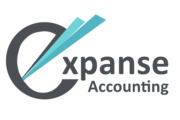
STP2 – ATO news
The ATO has released an Article on 7 December 2021 saying that although the mandatory start date for implementing STP 2 is 1 January 2022, they will be flexible to support in the STP reporting transition. They further stated that should your payroll solution be ready to use by 1 January 2022 you should start Phase 2 reporting if possible. You will be considered to be reporting on time if you start Phase 2 before 1 March 2022 and won’t need to apply for an extension.
Further details on this article can be found here > https://www.ato.gov.au/Newsroom/smallbusiness/Employers/Supporting-the-transition-to-STP-Phase-2-reporting
How is STP2 different?
In a nutshell STP2 sends a more detailed report regarding employee payments to the ATO. This will help reduce interactions with other government agencies.
What won’t change
- the way you lodge
- the due date
- the types of payments that are needed
- tax and super obligation
- end of year finalisation requirements
Key Changes
Disaggregation of gross income – The amount reported on employee payments do not change, they way it is shown has changed. With STP2 you will have to setup income types for your employees. These will help identify income that may be taxed differently.
Income Types under STP2
- SAW – Salary and Wages
- CHP – Closely Held Payees
- WHM – Working Holiday Makes
- FEI – Foreign Employment Income
- IAA – Inbound Assignees to Australia
- SWP – Seasonal Worker Programme
- JPD – Joint Petroleum Development Area
- VOL – Voluntary Agreement
- LAB – Labour Hire
- OSP – Other Specified Payments
More details regarding the Income Types can be found on the ATO website below.
https://www.ato.gov.au/Business/Single-Touch-Payroll/In-detail/Single-Touch-Payroll-Phase-2-employer-reporting-guidelines/?anchor=Reportingtheamountsyouhavepaid#Reportingtheamountsyouhavepaid
Employment and taxation conditions – With STP2 you will now include the information regarding the employment basis, information on employees TFN declaration and details of when and why the employee leaves. Prior to STP 2 these details were provided in different ways and on different forms.
Country codes – in some cases country codes will need to be report – for instance, when payments are made to an Australian resident working overseas.
Child support garnishees and child support deductions – These payments are not required to be submitted through STP2 however this will reduce the need to provide separate remittance advices to the Child Support Register if reported through STP2. (Not all Payroll providers will have this functionality).
Reporting previous Business Management Software IDs and Payroll IDs – This is not required and not all payroll software providers will have this solution offering available. With this you are able to provide details to the ATO when your organisation withgo a business structure change or changing software and payment balances can’t be zeroed out. The ATO will be able to identify any duplicate income statements.
Xero Clients
Xero has received a 12 month deferral from the ATO. This means that all Xero customers don’t need to do anything until notified by Xero of any changes until 31 December 2022.
More information about what Xero is doing is available below.
https://www.xero.com/blog/2021/10/stp-phase-2
QuickBooks Online Clients
QuickBooks Online Clients can start reporting with STP2 from 1 January 2022.
Below is a guide on what to do and how to prepare for STP2 reporting.
